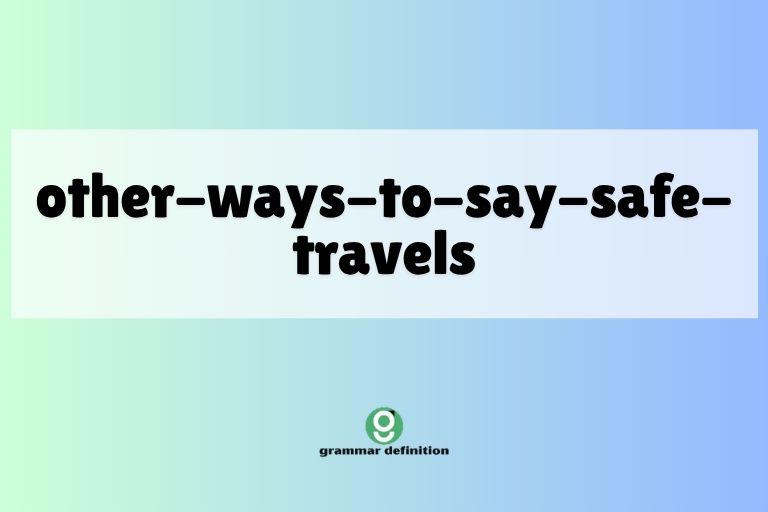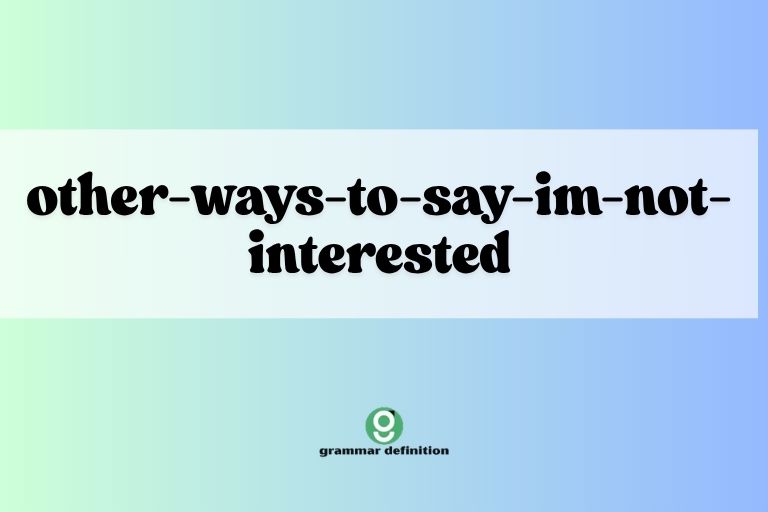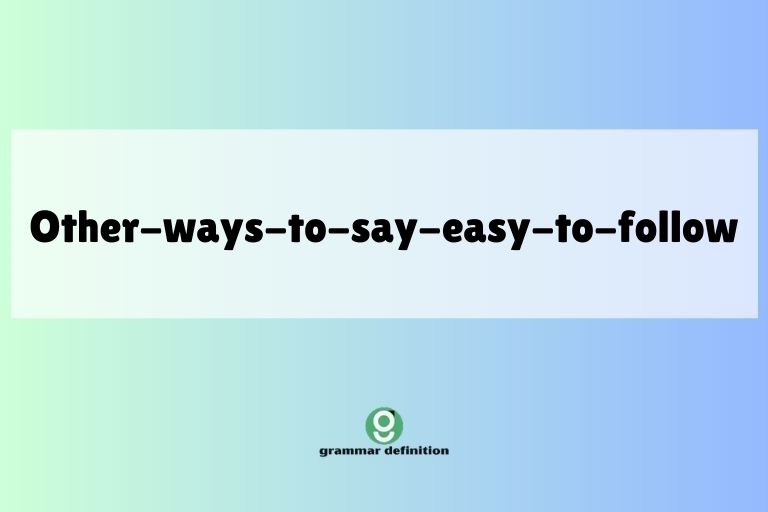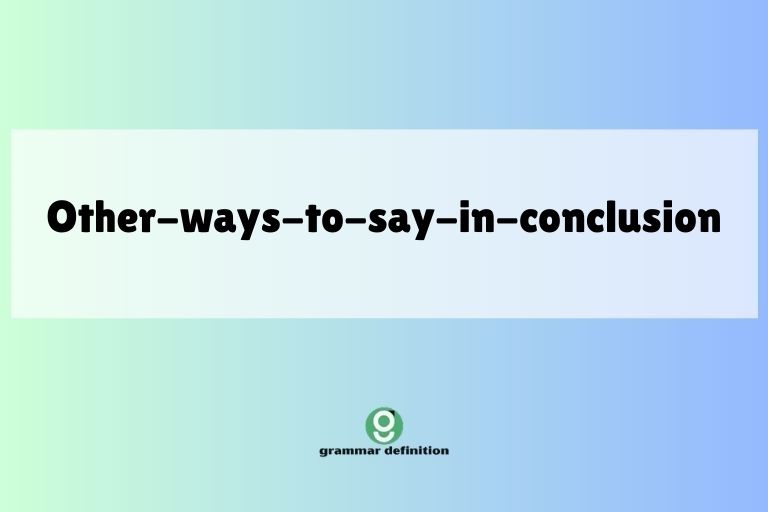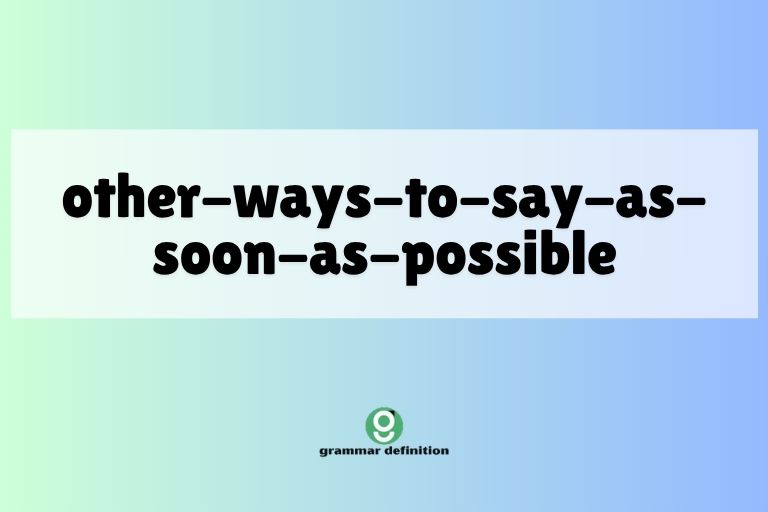Beyond “I’m All Ears”: Expanding Your Listening Vocabulary
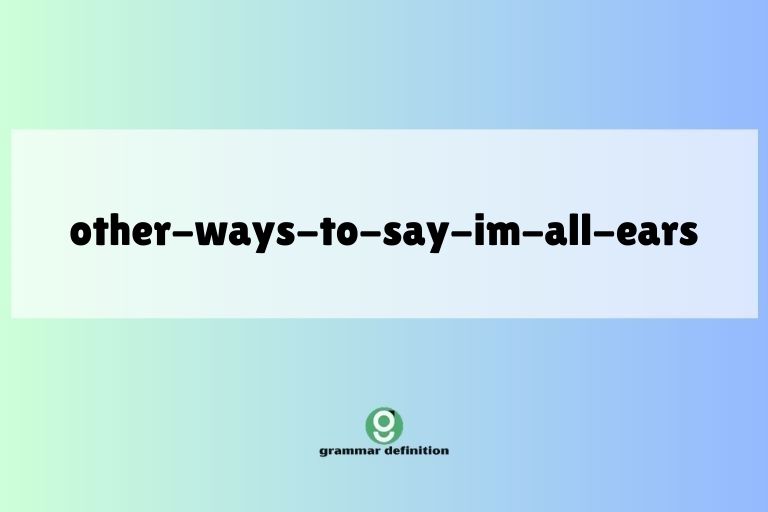
Effective communication involves not only expressing yourself clearly but also demonstrating that you are actively listening and engaged. While the phrase “I’m all ears” is a common and easily understood way to indicate attentiveness, relying on it exclusively can make your speech sound repetitive and limited.
This article explores a variety of alternative expressions that convey the same meaning, adding nuance and sophistication to your communication skills. Whether you’re a student, a professional, or simply someone looking to improve their English fluency, mastering these alternatives will enhance your ability to connect with others and participate more effectively in conversations.
This comprehensive guide will delve into the definitions, structures, usage rules, and common mistakes associated with each alternative. Through numerous examples, practice exercises, and frequently asked questions, you’ll gain a thorough understanding of how to use these phrases correctly and confidently.
By the end of this article, you’ll have a richer, more versatile vocabulary for expressing your attentiveness and demonstrating active listening.
Table of Contents
- Introduction
- Definition of “I’m All Ears”
- Structural Breakdown of “I’m All Ears”
- Alternatives to “I’m All Ears”
- Examples of Alternative Phrases
- Usage Rules
- Common Mistakes
- Practice Exercises
- Advanced Topics
- FAQ
- Conclusion
Definition of “I’m All Ears”
The idiom “I’m all ears” is a figurative expression used to convey that one is completely attentive and ready to listen to what someone has to say. It implies a willingness to listen without interruption and a genuine interest in the speaker’s message.
The phrase suggests that the listener is giving their full attention to the speaker, metaphorically using their ears as the primary sense for receiving information.
In essence, “I’m all ears” is a signal of active listening, assuring the speaker that their words are being heard and valued. It’s a common way to encourage someone to continue speaking, particularly when they are hesitating or unsure about sharing something.
The expression is generally considered informal but is widely accepted in everyday conversation.
Structural Breakdown of “I’m All Ears”
The phrase “I’m all ears” is a simple yet effective idiom. Let’s break down its structure:
- I’m: This is a contraction of “I am,” the first-person singular present tense of the verb “to be.” It identifies the speaker as the one who is listening.
- All: This adjective modifies “ears,” emphasizing the completeness of the listener’s attention. It implies that the listener’s focus is entirely on the speaker’s words.
- Ears: This noun refers to the organs of hearing, symbolizing the act of listening. In this context, “ears” represents the listener’s willingness to receive and process information.
The structure is straightforward: a subject (“I”), a verb (“am”), and a phrase (“all ears”) that acts as a subject complement, describing the state of the subject. The simplicity of the structure contributes to the idiom’s accessibility and ease of use.
Alternatives to “I’m All Ears”
While “I’m all ears” is a useful phrase, there are many other ways to express attentiveness and interest in what someone is saying. These alternatives can add variety to your speech and allow you to tailor your response to the specific context and your relationship with the speaker.
Phrases Indicating Attentiveness
These phrases directly convey that you are paying attention and ready to listen.
- “I’m listening.”
- “I’m all attention.”
- “I’m ready to hear what you have to say.”
- “Go ahead, I’m here.”
- “I’m focused on you.”
Phrases Showing Interest
These phrases express your genuine interest in the speaker’s topic.
- “That sounds interesting.”
- “I’d like to hear more about that.”
- “Tell me everything.”
- “I’m curious to hear what happened.”
- “What’s on your mind?”
Phrases Encouraging the Speaker
These phrases encourage the speaker to continue and feel comfortable sharing.
- “Please, go on.”
- “Continue, I’m interested.”
- “Don’t hesitate, tell me.”
- “I’m here to listen.”
- “Feel free to share.”
Formal Alternatives
These phrases are suitable for professional or more formal settings.
- “I’m ready to listen to your concerns.”
- “I’m available to hear your perspective.”
- “I’m attentive to your explanation.”
- “Please, proceed.”
- “I’m eager to hear your thoughts.”
Informal Alternatives
These phrases are appropriate for casual conversations with friends and family.
- “Spill the beans!”
- “What’s up?”
- “Lay it on me.”
- “Tell me about it.”
- “Let’s hear it!”
Examples of Alternative Phrases
The following tables provide examples of how to use these alternative phrases in different contexts. Each table focuses on a specific category of alternatives, illustrating their usage with various scenarios.
This first table will show examples of phrases that directly indicate attentiveness, replacing “I’m all ears” in different conversational scenarios.
| Phrase | Example Sentence | Context |
|---|---|---|
| I’m listening. | “I’m listening, tell me what’s been bothering you.” | A friend confiding in you. |
| I’m all attention. | “Okay, team, I’m all attention. Let’s hear the new marketing strategy.” | A business meeting. |
| I’m ready to hear what you have to say. | “I’m ready to hear what you have to say before I make a decision.” | A formal discussion or debate. |
| Go ahead, I’m here. | “Go ahead, I’m here if you need to vent.” | Offering support to someone stressed. |
| I’m focused on you. | “During our session, I’m focused on you and your needs.” | A therapist speaking to a patient. |
| I’m tuned in. | “Don’t worry, I’m tuned in. Explain the process again.” | A colleague asking for clarification. |
| I’m here for you. | “I’m here for you, whatever you need to talk about.” | Offering emotional support. |
| I’m paying attention. | “I’m paying attention, even if I don’t seem like it.” | Assuring someone you are listening. |
| I’m following you. | “Yes, I’m following you. Please continue with the explanation.” | Understanding a complex explanation. |
| I’m with you. | “I’m with you. What’s the next step?” | Showing agreement and attentiveness. |
| I’m all yours. | “For the next hour, I’m all yours. Let’s discuss your concerns.” | A professional offering dedicated time. |
| I’m eager to hear. | “I’m eager to hear your proposal for the new project.” | Expressing enthusiasm in a business setting. |
| I’m keen to listen. | “I’m keen to listen to your experiences in South America.” | Showing genuine interest in someone’s story. |
| I’m all ears and ready. | “I’m all ears and ready, tell me about your day.” | Offering a listening ear after a long day. |
| I’m ready to lend an ear. | “I’m ready to lend an ear if you need someone to talk to.” | Offering support and a listening ear. |
| I’ve got my listening ears on. | “Okay, I’ve got my listening ears on. What’s the big news?” | Informally showing you’re ready to listen. |
| I’m ready when you are. | “I’m ready when you are to discuss the budget.” | Formally indicating readiness to listen. |
| I’m here to listen intently. | “I’m here to listen intently to your presentation.” | Expressing a commitment to focused listening. |
| I’m completely attentive. | “Don’t worry, I’m completely attentive. You have my full focus.” | Reassuring someone of your undivided attention. |
| I’m at your service. | “I’m at your service. Please tell me what’s on your mind.” | Offering assistance and a listening ear. |
The next table will focus on phrases that show genuine interest in what the speaker has to say, providing a more engaging alternative to “I’m all ears.”
| Phrase | Example Sentence | Context |
|---|---|---|
| That sounds interesting. | “That sounds interesting; tell me more about your trip to Japan.” | Expressing interest in a travel story. |
| I’d like to hear more about that. | “I’d like to hear more about that project you’re working on.” | Showing interest in a colleague’s work. |
| Tell me everything. | “Oh, you met a celebrity? Tell me everything!” | Excitedly asking for details about an event. |
| I’m curious to hear what happened. | “I’m curious to hear what happened at the meeting after I left.” | Inquiring about the outcome of an event. |
| What’s on your mind? | “You seem troubled. What’s on your mind?” | Showing concern and inviting someone to share. |
| I’m intrigued. | “I’m intrigued by your new theory; please, elaborate.” | Showing scholarly interest in a new idea. |
| This sounds fascinating. | “This sounds fascinating. I’m keen to learn more about this.” | Expressing strong interest in a topic. |
| I’m all agog. | “I’m all agog to hear about your adventures!” | Informally expressing excitement and interest. |
| I’m dying to know. | “I’m dying to know what she said!” | Expressing strong curiosity. |
| What’s the scoop? | “So, what’s the scoop on the new merger?” | Casually inquiring about news or gossip. |
| I’m hooked. | “I’m hooked! Tell me what happened next.” | Expressing strong interest in a story. |
| I want to know more. | “I want to know more about your research.” | Showing your desire to learn more about a specific topic. |
| Elaborate, please. | “Elaborate, please. I’m very interested in your findings.” | Formally asking for more details. |
| I find this captivating. | “I find this captivating. Can you tell me more about the art movement?” | Expressing a strong, positive interest. |
| Pray, continue. | “Pray, continue. Your story is quite riveting.” | An old-fashioned way to show interest. |
| Spill the details! | “Come on, spill the details! I want to know everything.” | Informally urging someone to share information. |
| Let’s hear it all. | “Let’s hear it all. I want to know every single detail.” | Showing a thorough interest in hearing the full story. |
| I’m eager to hear the rest. | “I’m eager to hear the rest of the story.” | Expressing anticipation for the continuation of a narrative. |
| Unfold the tale. | “Unfold the tale. I’m ready to listen to your adventure.” | A poetic way to invite someone to share a story. |
| I’m genuinely interested. | “I’m genuinely interested to hear your insights on the matter.” | Expressing sincere curiosity. |
This table contains phrases that encourage the speaker to continue, assuring them of your attentiveness and support, a more proactive approach than simply saying “I’m all ears.”
| Phrase | Example Sentence | Context |
|---|---|---|
| Please, go on. | “Please, go on. I’m listening to every word.” | Encouraging someone to continue their story. |
| Continue, I’m interested. | “Continue, I’m interested in what you have to say about the changes.” | Prompting someone to elaborate on a topic. |
| Don’t hesitate, tell me. | “Don’t hesitate, tell me. I want to know what’s bothering you.” | Encouraging someone to share their feelings. |
| I’m here to listen. | “I’m here to listen, no matter how long it takes.” | Offering support and a listening ear. |
| Feel free to share. | “Feel free to share anything that’s on your mind.” | Creating a safe space for sharing. |
| Keep talking. | “Keep talking. I want to understand your perspective.” | Encouraging continued communication. |
| Don’t stop now. | “Don’t stop now, it’s getting interesting!” | Expressing interest and encouraging continuation. |
| You have my attention. | “You have my attention, please proceed.” | Formally assuring someone of your focus. |
| Pour it out. | “Pour it out. I’m here to listen to your troubles.” | Informally inviting someone to share their problems. |
| Unburden yourself. | “Unburden yourself. I’m here to listen without judgment.” | Offering a non-judgmental listening space. |
| Say more. | “Say more. I want to understand your thinking.” | Encouraging deeper explanation. |
| Speak your mind. | “Speak your mind. I value your opinion.” | Encouraging honest expression. |
| Air your thoughts. | “Air your thoughts. I’m here to listen openly.” | Inviting someone to share their ideas. |
| Don’t hold back. | “Don’t hold back. I want to hear the full story.” | Encouraging complete honesty. |
| Go on, I’m intrigued. | “Go on, I’m intrigued by this plot twist.” | Showing interest while encouraging continuation. |
| Proceed, please. | “Proceed, please. I’m following your argument.” | Formally inviting someone to continue. |
| Don’t keep me in suspense. | “Don’t keep me in suspense. What happened next?” | Expressing eagerness to hear the rest of the story. |
| Tell me all about it. | “Tell me all about it. I’m ready to listen to every detail.” | Showing a thorough willingness to listen. |
| Let’s hear it. | “Let’s hear it. I’m ready for the good news.” | Expressing anticipation for a positive announcement. |
| Carry on. | “Carry on. I’m interested to hear your conclusion.” | Encouraging someone to continue their presentation. |
This final table will provide examples of formal and informal alternatives to “I’m all ears”, allowing you to choose a phrase that is appropriate for the context of the conversation.
| Phrase | Example Sentence | Context (Formal/Informal) |
|---|---|---|
| I’m ready to listen to your concerns. | “Mr. Smith, I’m ready to listen to your concerns regarding the project.” | Formal (Business meeting) |
| I’m available to hear your perspective. | “I’m available to hear your perspective on this matter before we proceed.” | Formal (Professional discussion) |
| I’m attentive to your explanation. | “Professor, I’m attentive to your explanation of the theorem.” | Formal (Academic setting) |
| Please, proceed. | “Please, proceed with your presentation, Doctor.” | Formal (Presentation setting) |
| I’m eager to hear your thoughts. | “I’m eager to hear your thoughts on the proposed changes.” | Formal (Professional environment) |
| Spill the beans! | “Alright, spill the beans! What happened on your date?” | Informal (Casual conversation with a friend) |
| What’s up? | “Hey, what’s up? You seem excited.” | Informal (Greeting a friend) |
| Lay it on me. | “Okay, lay it on me. I can handle the bad news.” | Informal (Preparing for potentially bad news) |
| Tell me about it. | “You had a rough day? Tell me about it.” | Informal (Offering sympathy and a listening ear) |
| Let’s hear it! | “You got the job? Let’s hear it!” | Informal (Expressing excitement) |
| What’s the buzz? | “Hey, what’s the buzz around the office today?” | Informal (Casual workplace conversation) |
| Dish it out! | “Come on, dish it out! I can take the truth.” | Informal (Encouraging someone to be honest) |
| Give it to me straight. | “Just give it to me straight. I want the honest answer.” | Informal (Requesting directness) |
| What’s the word? | “So, what’s the word? Any updates on the project?” | Informal (Inquiring about news or updates) |
| Spill! | “Spill! I need to know what happened at the party.” | Informal (Expressing strong curiosity) |
| What’s cooking? | “Hey, what’s cooking? Anything interesting happening?” | Informal (Casual greeting and inquiry) |
| Let’s yak. | “Let’s yak for a bit. I want to hear about your vacation.” | Informal (Suggesting a casual chat) |
| Give me the lowdown. | “Give me the lowdown on the new employee.” | Informal (Requesting information on someone) |
| Tell me the story. | “Alright, tell me the story from the beginning.” | Informal (Requesting a narrative) |
| What’s going on? | “Hey, what’s going on? You seem upset.” | Informal (Expressing concern) |
Usage Rules
While most of the alternative phrases are straightforward, it’s important to consider the context and your relationship with the speaker to ensure appropriate usage. Here are some general rules:
- Formality: Choose formal phrases like “I’m ready to listen to your concerns” in professional settings or when speaking to someone you don’t know well. Opt for informal phrases like “Spill the beans!” with close friends or family.
- Tone: Match your tone to the situation. A serious situation calls for a sincere and attentive tone, while a casual conversation allows for a more relaxed and playful tone.
- Body Language: Your body language should reinforce your verbal cues. Maintain eye contact, nod occasionally, and show genuine interest through your facial expressions.
- Avoid Interruptions: Regardless of the phrase you use, avoid interrupting the speaker. Let them finish their thoughts before responding.
- Be Genuine: The most important rule is to be genuine in your attentiveness. People can often sense insincerity, which can damage your credibility and relationships.
Common Mistakes
Even with a good understanding of the alternative phrases, it’s easy to make mistakes. Here are some common errors to avoid:
- Using overly formal language in informal settings: Saying “I’m available to hear your perspective” to a close friend can sound stiff and unnatural.
- Using overly informal language in formal settings: Saying “Spill the beans!” to your boss is generally inappropriate.
- Saying the phrase without showing genuine interest: Simply saying “I’m listening” without making eye contact or nodding can come across as insincere.
- Interrupting the speaker after saying you’re listening: This defeats the purpose of expressing attentiveness.
- Using the wrong tone: Saying “Tell me everything!” in a sarcastic tone can be misinterpreted.
Here’s a table illustrating some common mistakes with corrections:
| Incorrect | Correct | Explanation |
|---|---|---|
| “I’m available to hear your perspective,” (said to a close friend while gossiping). | “Spill the beans! What happened?” | Using formal language in an informal setting. |
| “Spill the beans!” (said to your CEO during a board meeting). | “I’m ready to listen to your concerns regarding the quarterly report.” | Using informal language in a formal setting. |
| “I’m listening” (while looking at your phone). | “I’m listening,” (while making eye contact and nodding). | Saying the phrase without showing genuine interest. |
| “I’m all ears,” (then immediately interrupting the speaker). | “I’m all ears,” (and waiting patiently for the speaker to finish). | Interrupting the speaker after expressing attentiveness. |
| “Tell me everything!” (said sarcastically). | “Tell me everything,” (said with genuine curiosity). | Using the wrong tone. |
Practice Exercises
Test your understanding of the alternative phrases with these practice exercises. Choose the most appropriate alternative to “I’m all ears” for each scenario.
Exercise 1: Choose the best alternative for a formal business meeting.
- Your CEO is about to present the annual report. Which phrase is most appropriate?
- Spill the beans!
- I’m ready to listen to your concerns.
- What’s up?
Answer: b. I’m ready to listen to your concerns.
- A colleague wants to discuss a problem they’re facing with a project. Which phrase is most appropriate?
- Lay it on me.
- I’m available to hear your perspective.
- Tell me about it.
Answer: b. I’m available to hear your perspective.
- A presenter is about to begin their presentation. Which phrase is most appropriate?
- Please, proceed.
- What’s the word?
- Let’s hear it!
Answer: a. Please, proceed.
- Your manager is about to share some important news. Which phrase is most appropriate?
- I’m eager to hear your thoughts.
- Spill!
- What’s cooking?
Answer: a. I’m eager to hear your thoughts.
- A client is explaining their needs for a new project. Which phrase is most appropriate?
- I’m attentive to your explanation.
- Dish it out!
- Give me the lowdown.
Answer: a. I’m attentive to your explanation.
- The CFO is presenting the quarterly results. Which phrase is most appropriate?
- Tell me the story.
- I’m all attention.
- What’s going on?
Answer: b. I’m all attention.
- The HR director is about to announce new company policies. Which phrase is most appropriate?
- Let’s yak.
- I’m ready to hear what you have to say.
- What’s the buzz?
Answer: b. I’m ready to hear what you have to say.
- The marketing team is presenting a new campaign strategy. Which phrase is most appropriate?
- Let’s hear it!
- I’m focused on you.
- Spill the details!
Answer: b. I’m focused on you.
- The IT department is explaining a new software update. Which phrase is most appropriate?
- Give it to me straight.
- I’m following you.
- What’s up?
Answer: b. I’m following you.
- The legal team is explaining the implications of a new law. Which phrase is most appropriate?
- What’s the scoop?
- I’m with you.
- Spill!
Answer: b. I’m with you.
Exercise 2: Choose the best alternative for an informal conversation with a friend.
- Your friend is about to tell you about their date last night. Which phrase is most appropriate?
- Spill the beans!
- I’m ready to listen to your concerns.
- I’m all attention.
Answer: a. Spill the beans!
- Your friend seems upset and wants to talk. Which phrase is most appropriate?
- Lay it on me.
- I’m available to hear your perspective.
- Please, proceed.
Answer: a. Lay it on me.
- Your friend has some exciting news to share. Which phrase is most appropriate?
- Tell me about it.
- I’m eager to hear your thoughts.
- I’m attentive to your explanation.
Answer: a. Tell me about it.
- Your friend is about to tell you a secret. Which phrase is most appropriate?
- Let’s hear it!
- I’m ready to hear what you have to say.
- What’s up?
Answer: a. Let’s hear it!
- Your friend is gossiping about someone. Which phrase is most appropriate?
- What’s cooking?
- I’m focused on you.
- Spill!
Answer: c. Spill!
- Your friend wants to vent about their day. Which phrase is most appropriate?
- Let’s yak.
- I’m following you.
- I’m with you.
Answer: a. Let’s yak.
- Your friend is telling a complicated story. Which phrase is most appropriate?
- What’s the buzz?
- Give me the lowdown.
- What’s the word?
Answer: b. Give me the lowdown.
- Your friend is about to share some bad news. Which phrase is most appropriate?
- Dish it out!
- I’m all attention.
- Tell me the story.
Answer: a. Dish it out!
- Your friend is explaining a new hobby they’ve started. Which phrase is most appropriate?
- Give it to me straight.
- I’m ready to listen to your concerns.
- What’s going on?
Answer: c. What’s going on?
- Your friend is about to reveal a surprise. Which phrase is most appropriate?
- Spill!
- I’m eager to hear your thoughts.
- What’s cooking?
Answer: a. Spill!
Advanced Topics
For advanced learners, consider exploring the nuances of nonverbal communication and how they complement verbal expressions of attentiveness. Research the impact of cultural differences on communication styles and how attentiveness is expressed in different cultures.
Additionally, study the art of active listening, which involves not only hearing the speaker’s words but also understanding their emotions and underlying message. This includes techniques like paraphrasing, summarizing, and asking clarifying questions.
Another advanced topic is the use of rhetorical devices to enhance your expressions of attentiveness. For example, using a rhetorical question like “Wouldn’t you agree?” can engage the speaker and show that you are actively thinking about their message.
Similarly, using metaphors and similes
can make your communication more vivid and memorable. For instance, instead of saying “I’m listening carefully,” you could say “I’m hanging on every word.”
Finally, explore the psychology of listening. Understanding how people process information and what makes them feel heard can significantly improve your communication skills.
Research topics like cognitive biases, emotional intelligence, and the power of empathy in communication.
FAQ
Q: Is it ever inappropriate to use “I’m all ears”?
A: While generally acceptable, “I’m all ears” might be too informal for very formal or professional settings. In such cases, opt for more formal alternatives like “I’m ready to listen to your concerns.”
Q: How can I show I’m listening without saying anything?
A: Nonverbal cues are crucial. Maintain eye contact, nod occasionally, smile appropriately, and use open body language to show you are engaged and attentive.
Q: What if I genuinely can’t pay attention at the moment?
A: Honesty is the best policy. Politely explain that you’re currently preoccupied but would like to hear what they have to say later.
For example, “I’d love to hear about this, but I’m in the middle of something right now. Can we talk in an hour?”
Q: How do I avoid sounding insincere when saying I’m listening?
A: Make sure your body language matches your words. Put away distractions, make eye contact, and respond thoughtfully to what the speaker is saying.
Ask clarifying questions to show you’re engaged.
Q: Can I use these phrases in written communication?
A: Some phrases, like “I’m ready to listen to your concerns,” can be adapted for written communication, especially in emails or formal letters. However, many of the informal phrases are better suited for spoken conversation.
Q: What are some cultural considerations when expressing attentiveness?
A: In some cultures, direct eye contact is considered respectful and attentive, while in others, it may be seen as aggressive or rude. Similarly, the level of emotional expression that is considered appropriate varies across cultures.
Research the communication norms of the culture you are interacting with to avoid misunderstandings.
Q: How can I improve my active listening skills?
A: Practice techniques like paraphrasing (repeating the speaker’s message in your own words), summarizing (briefly outlining the main points), and asking clarifying questions. Focus on understanding the speaker’s emotions and underlying message, not just their words.
Q: Are there any phrases that should be avoided when trying to show attentiveness?
A: Avoid phrases that can come across as dismissive, uninterested, or sarcastic. Examples include “Okay, okay, get to the point,” or “Yeah, yeah, I hear you.” Also, avoid interrupting or changing the subject abruptly.
Q: How can I encourage someone to open up and share more?
A: Use open-ended questions that require more than a “yes” or “no” answer. Show empathy and understanding by acknowledging their feelings.
Create a safe and non-judgmental space for them to share their thoughts and emotions.
Q: What if I’m having trouble understanding what someone is saying?
A: Don’t be afraid to ask for clarification. You can say something like, “I’m not sure I understand.
Can you explain that in a different way?” or “Can you give me an example?” Showing that you’re trying to understand will be appreciated.
Conclusion
Mastering alternative ways to say “I’m all ears” can significantly enhance your communication skills and improve your relationships. By understanding the nuances of each phrase and using them appropriately, you can convey genuine attentiveness and create more meaningful connections with others.
Remember to consider the context, your relationship with the speaker, and your body language to ensure that your message is received effectively. With practice and attention to detail, you can become a more skilled and empathetic communicator.

